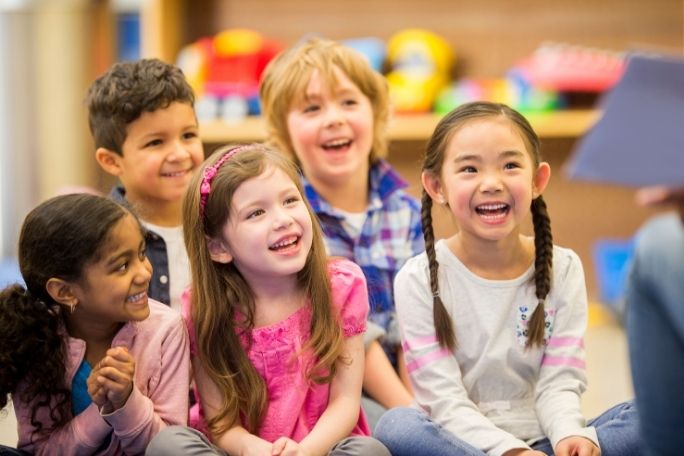Lesson summary
Children explore cultural diversity by thinking about how colours make the world a more interesting place. In particular, they explore the differences between skin, hair and eye colours. Based on this, children will create a self-portrait to share as part of Harmony Week celebrations.
Lesson guides and printables
Lesson details
Curriculum mapping
Learning Outcome 1: Children have a strong sense of identity
1.3 Children develop knowledgeable and confident self identities
1.4 Children learn to interact in relation to others with care, empathy and respect
Learning Outcome 2: Children are connected with and contribute to their world
2.1 Children develop a sense of belonging to groups and communities and an understanding of the reciprocal rights and responsibilities necessary for active community participation
2.2 Children respond to diversity with respect
Learning Outcome 3: Children have a strong sense of wellbeing
3.1 Children become strong in their social and emotional wellbeing
Learning Outcome 4: Children are confident and involved learners
4.1 Children develop dispositions for learning such as curiosity, cooperation, confidence, creativity, commitment, enthusiasm, persistence, imagination and reflexivity
Resources required
- Art materials including Faber Castell World Colours materials or other art materials that represent a range of skin, hair and eye colours
- World Colours Flashcards, printed in colour
- Colour Chart (optional)
- These images, printed:
Additional info
Faber-Castell has long understood the importance of creativity to all people, especially young people, while continuously searching for environmentally friendly processes and high-quality materials to enhance children’s creative experience throughout every development phase. For more information about Faber-Castell, click here.


Welcome back!
Don't have an account yet?
Log in with:
By signing up to Cool.org you consent and agree to Cool's privacy policy to
store, manage and process your personal information. To read more, please see
our privacy policy here(Opens in new tab).
Create your free Cool.org account.
Many of our resources are free, with an option to upgrade to Cool+ for premium content.
Already have an account?
Sign up with:
By signing up to Cool.org you consent and agree to Cool's privacy policy to
store, manage and process your personal information. To read more, please see
our privacy policy here(Opens in new tab).